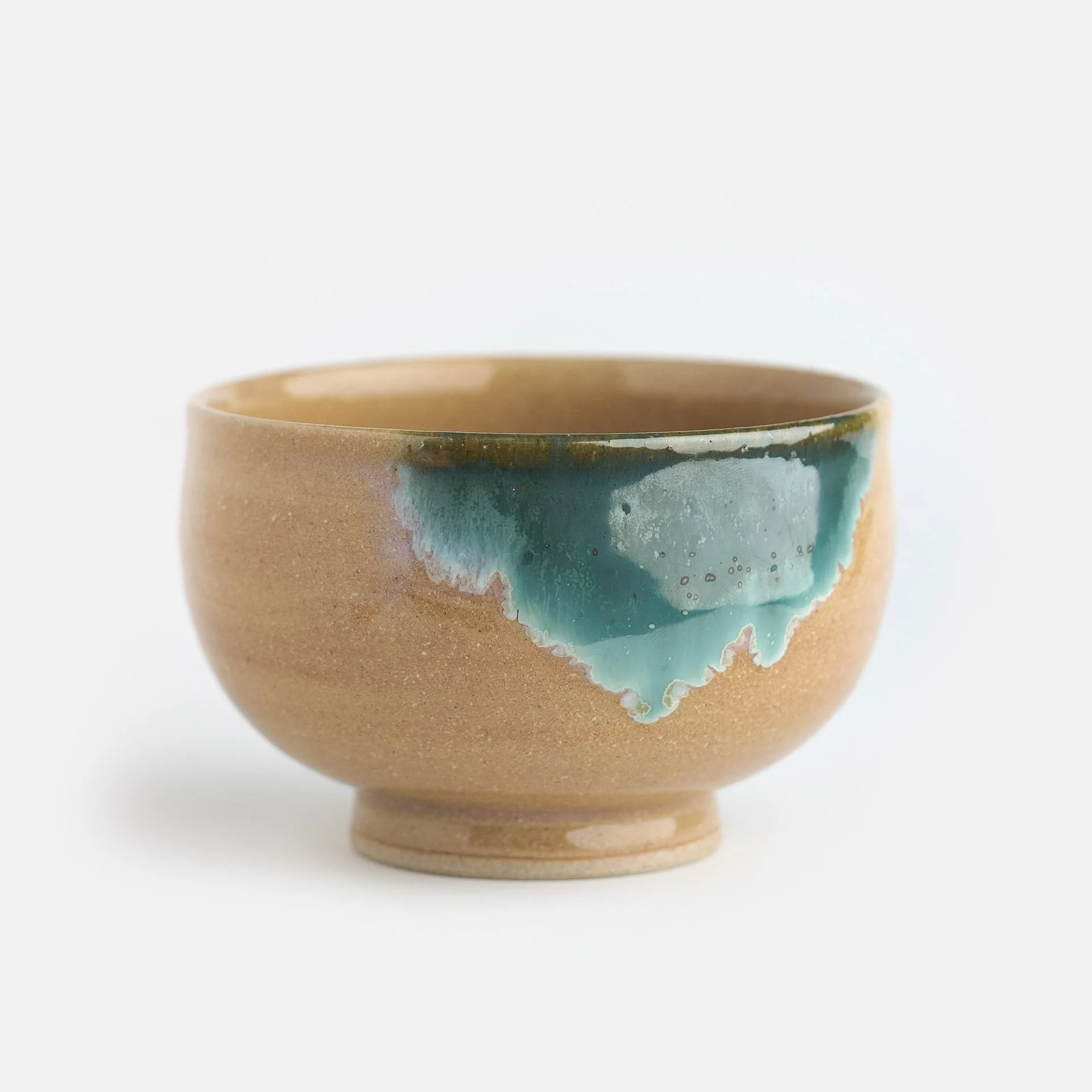 Image 1 of 5
Image 1 of 5

 Image 2 of 5
Image 2 of 5

 Image 3 of 5
Image 3 of 5

 Image 4 of 5
Image 4 of 5

 Image 5 of 5
Image 5 of 5






Totokiさん Aganoyaki Blue & Tan Chawan Matcha Bowl (茶碗)
A traditional Aganoyaki (上野焼) Chawan, or Matcha Bowl, with bright green-blue coloration. Made by a 13th-generation potter in Fukuchi, Fukuoka.
Please note that the Chawan is handmade; thus, every piece will have minor differences from the photo.
Dimensions: 4.5” x 4.5” x 3”
A traditional Aganoyaki (上野焼) Chawan, or Matcha Bowl, with bright green-blue coloration. Made by a 13th-generation potter in Fukuchi, Fukuoka.
Please note that the Chawan is handmade; thus, every piece will have minor differences from the photo.
Dimensions: 4.5” x 4.5” x 3”
A traditional Aganoyaki (上野焼) Chawan, or Matcha Bowl, with bright green-blue coloration. Made by a 13th-generation potter in Fukuchi, Fukuoka.
Please note that the Chawan is handmade; thus, every piece will have minor differences from the photo.
Dimensions: 4.5” x 4.5” x 3”
About this Chawan
A supreme example of Aganoyaki (上野焼) Chawan from a 13th generation pottery master Totoki Kiln (十時窯) with class Rokushou (緑青流し) blue coloration. Note the blue-green glaze atop an earthen beige that holds a stunning contrast to the neon green of Ooika Matcha.
-
Fukuchi, Fukuoka is a small village located at the base of the clay-rich Fukuchi mountain. It is famous today for its vibrant copper-blue style of teaware known as Aganoyaki (上野焼.) While there are many styles of Aganoyaki, the classic “blue” comes in two forms, Rokushou (緑青流し) and Souroku (総綠.)
Rokushou (緑青流し) is a glaze of blue that covers part of the ceramic, allowing some of the natural beige color to come through. Souroku (総綠) on the other hand is a blue coating that covers the entire piece. These words translate to something like “partial green” and “all green.”
Another feature of Aganoyaki is the swirl-like “agano mark” known as Tomoe (巴.) Adding this swirl to the bottom of all Aganoyaki pieces in the village started around the 18th century, as did the “green-blue” color.
It was Tadaoki Hosokawa (細川忠興), both a general and student of the tea master Sen no Rikyu, who invited potters from the Joseon dynasty (Korea) to Japan. This inspired the building of Kilns in Fukuchi in 1602 which marked the beginning of Aganoyaki.
Today, the village has about 20 potters that continue producing Aganoyaki. Ooika is thrilled to work directly with many potters in this village to bring this vibrant form of pottery to the United States.
-
Hand wash with mild soap and a non-abrasive sponge. Allow your ceramics to air dry (or gently dry with a soft towel.)
-
Ensure your ceramic is completely dry before storing it. Avoid stacking them on top of one another to prevent cracking or chipping.
Teaware Notes
Category Aganoyaki (上野焼) |
Artisan Totoki Kiln (十時窯) |
Terrior Fukuchi, Fukuoka |


Totoki Kiln (十時窯)
His studio is adorned with awards, government certifications, and lineage maps dating back 13 generations.
Some Chawan on the shelves are hundreds of years old. I’m careful when I approach them, stepping softly, like a cat.
Fukuchi, the Pottery Mountain
Known for producing some of the most visually stunning pottery in Japan, Aganoyaki.
Despite cold temperatures on my visit, the potters were wonderfully warm and inviting people.


